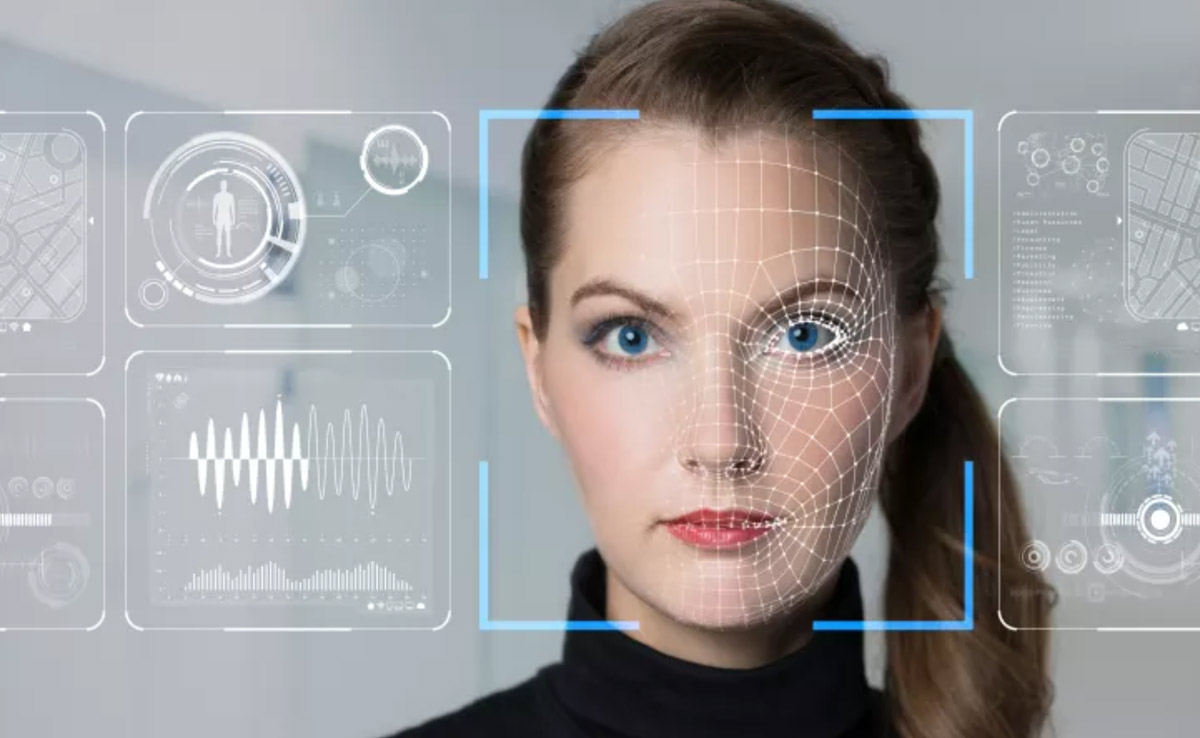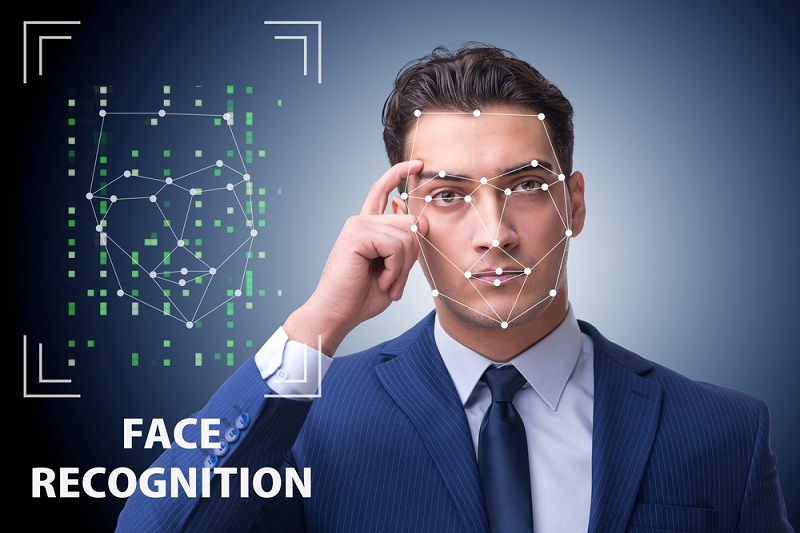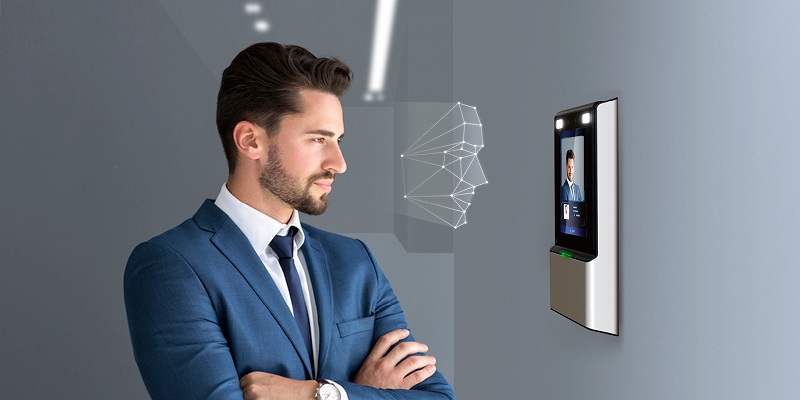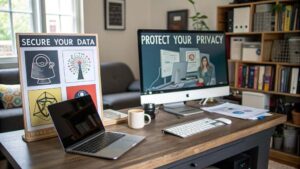Face recognition is a modern progressive technology, with which intelligent devices can identify a person by an image. It is hard to disagree that the introduction of this technology into the everyday life of individuals and society as a whole can be very useful, for example, it can greatly simplify the work of law enforcement agencies. However, let’s reflect on how much face recognition can affect your privacy and privacy rights.
Initially, as conceived by developers, face recognition involved the development of algorithms to determine the facial features of a particular person (analysis of the usual position of the head, size, and shape of the eyes, nose, cheekbones, etc.) in order to subsequently compare this data with the template. This method led to a superficial, planar representation of the face.
Before we assess the risks and benefits of this technology, let’s recognize that most people believe that face recognition is beneficial, first of all, to authoritarian, police states. Many are concerned about what the next step might be.

Even before face recognition became possible and accessible for wider use than only for the security needs of state institutions, airports, and crowded places, it was known that a person can be identified not only by fingerprints but also by certain features faces.
The most annoying news is that, unlike fingerprint verification, face recognition by artificial intelligence does not imply the consent or permission of the people to whom it was applied. Just recognize and everything, whether we like it or not. Many, of course, know that at the airports, at train stations, and in other public places there are systems for fixing and recognizing people who can easily identify a person in a crowd, but some people are not even aware of this. If you do not like it, it would be nice to find a way to protect yourself.
Let’s not forget that facial recognition can be much more difficult and not always objective. There are many factors that can affect the reliability of indications of devices or devices (light, weather conditions, the human condition, emotion, facial expression, posture, makeup, hair or headdress, glasses, etc.). Thus, the device can detect significant deviations from the template and fail to identify the person.
Face recognition refers to a person’s biometric data. Maintaining confidentiality is one of the biggest problems. The threat of confidentiality, in the first place, comes from companies engaged in the collection and storage of biometric data, since this is what creates the risk of loss or theft of this data.
As for other methods that help carry out facial recognition, their approaches differ little from traditional ones. The 3D facial recognition technology uses 3D sensors to collect information about the shape of the face. This information is then used to check for compliance with distinctive features on the surface of the face, such as the contour of the sockets, nose, and chin.

One of the advantages of three-dimensional facial recognition is that it is not affected by changes in lighting in the same way as other methods. This method can also identify a person by a number of viewing angles, including the type of profile. But, as noted earlier, even the 3D mapping method is not reliable when it comes to emotions and facial expressions.
Applications are being improved all the time; for example, they begin to analyze the texture of the skin of the face, using visual details of the skin and then use mathematical methods to identify the lines, patterns, and blemishes visible on the skin of a person’s face.
The latest innovation was the unification of all available methods (traditional, 3D-recognition and texture analysis of the skin) to make facial recognition more reliable and perfect.
The combined method has an advantage, as it is more reliable when it comes to changes in facial expression, blinking, frowning or smiling, and it is able to respond to the presence/absence of mustache, beard or glasses. The system also does not distinguish between race and gender characteristics of a person.
Face recognition – the threat of loss of personal privacy
The 21st century is marked by the emergence of various social networks and their ever-increasing influence on people’s lives. Even if you don’t want it yourself, your photo at any time may accidentally or purposely appear on social networks, there’s nothing you can do about it.
Many of us have become accustomed to seeing our friends and relatives almost daily through the lens of our phone. But let’s stop for a moment to think about our selfies. Add the GPS location of your device to your selfie, and your detractors will have an unlimited number of possibilities for malicious actions. We haven’t even touched DeepFace (the facial recognition system created by the Facebook research team), which allows us to identify a human face in a digital image.

Yes, we all understand why this technology is needed and what benefits do security units, police, national security services, and other law enforcement agencies. And, in this sense, face recognition serves the purpose of protecting us, citizens, from all sorts of criminals and intruders, and goes to the benefit of society. But this does not prevent us from doubting the usefulness of the technology for the law-abiding man in the street, because face recognition entails a huge risk of loss of individual privacy.
Civil rights organizations and supporters of privacy protection around the world constantly oppose the development and use of surveillance and surveillance technologies, arguing that the recognition of individuals in its current form violates the human right to privacy and confidentiality. The daily use of credit cards, mobile phones, and other gadgets allows us to monitor all of our actions and monitor us. If someone says: – I do not do anything like this, I have nothing to fear, let everyone who wants to look – then any security expert will say that this is a dangerous delusion.
What is dangerous? It is dangerous that face recognition can be used not only for personal identification but also for finding other personal data (photos, blog posts, social media profiles, behavior and areas of interest on the Internet, usual routes, etc.). But what scares the most is the fact that we do not know who is watching us, when and why. Imagine, you can be identified anywhere, at any time, unless your face is completely covered with a veil or a scarf. Already, many of your daily activities can be recorded: how do you try on clothes in a mall, eat at a restaurant, wash your hands in a public toilet, choose food for dinner, stand in traffic, park a car, escort your child to school, you never know.
This fundamentally changes the daily privacy policy, allowing any government agent or a random stranger to secretly collect the personal information of any person captured by the facial recognition system. At present, ordinary people simply cannot know by whom and for what their personal data are collected and, most importantly, how they will be used in the future. This method of collecting information does not imply that a person must consent to the use of his personal information, or, more likely, not to abuse it.
Needless to say, the preservation of privacy, confidentiality is a huge problem of our time. Face recognition, like modern technology used by big companies like Google or Apple, can be seen as a massive public observation. But what about the fact that people do not want their every movement to be tracked, recorded or used without their consent. People want to live in a free society, to have the opportunity to go out in public, without fear of being identified and observed.
How does face recognition work and how much is it necessary?
Face recognition has been known since the first photographic images appeared, including the photos of criminals for the police. The technology is continuously improved. Although face recognition software is no longer new to anyone, its widespread introduction into our daily life creates not so much an advantage as potential problems. Let’s start with the most important: face recognition creates excellent conditions and enormous opportunities for abuse of the data obtained by various categories of fraudsters, which, ultimately, threatens a complete loss of confidentiality.
Although there are ways to preserve your anonymity, for example, by connecting to the Internet only through a VPN, this solution only works if you are completely isolated from the world. Authoritative VPN providers will protect your devices from hacking cameras and using them to monitor you, but no VPN can protect you from public surveillance cameras and space satellites.
Once, artificial intelligence was the subject of science fiction novels and films, but nowadays it is literally everywhere, and each of us needs to do everything possible to ensure proper individual security measures and that artificial intelligence is used only for the benefit of all. society as well as a single person.
If we find a competent solution, then the moral and strictly regulated use of facial recognition technology will indeed serve the safety of people, and not a testing ground for fraudulent activities. The truth is that, despite its fantastic capabilities, modern advanced technologies are not always safe and require human control.

As problems arise, laws are created to prevent widespread misuse of personal information. In addition, we need to know that technology is evolving at a faster pace than legislation, so we can only predict some basic problems in the near future, such as corporate data collection and government supervision. Most identifiers now have biometric data, and this biometric technology is used to feed face recognition technology. This means that any of your photos can be used to track you further.
We all know very well the story told by Edward Snowden (using the US government’s technology to monitor other countries and even its own citizens), so we understand that mass surveillance using face recognition technology is, alas, no longer a fairy tale, but a reality.
A well-known fact is that Facebook was the first social networking platform website where the idea was to tag someone in a photo. In this case, face recognition was extra fun. However, this innovation has become one of the methods that allow Facebook to collect even more data about its users. It is important to note that all participants were automatically registered in this Facebook feature without further approval. The European Union even ruled that Facebook’s face recognition is an invasion of user privacy and has blocked its expansion within the EU.
Facebook is not the only company that experiments with facial recognition in photos and tags. Most of the main photography programs, including Apple and Google offer, also use face recognition to group photos. The main difference between Facebook and others is that Facebook identifies a person with a photo.
Enterprises and advertisers have a great desire to collect as much data as possible about potential customers. The increasing availability of software has enabled them to begin using face recognition.
New recognition technologies are not only technological advances, which are designed to benefit all of us, but they also provide governments, manufacturers of goods and advertisers with an opportunity to further violate your privacy. You can never be sure: where, when, by whom and with whom you are photographed. You cannot know in whose hands are your photos and assume how they are going to dispose of in the future. And it is not only about social networks. Governments and law enforcement agencies, as a rule, legally protect their right to collect data, mainly to ensure security at major events.
Face recognition is used as a security measure for a wide range of business and consumer applications. It is known that hackers have already attempted to deceive software for facial recognition, but so far to no avail, it turned out that it is very difficult to fake, for example, a voice or a fingerprint. We are not considering a possible attack for the purpose of fraud, we are trying to figure out: is it really necessary to recognize faces and how much does it violate the confidentiality in the daily life of respectable people? Your face is a mirror of your life, as soon as information about your life is made available to third parties, and, not necessarily to intruders, personal privacy comes to an end.

Where are you, my face?
Face recognition, as mentioned above, is most often used either by law enforcement agencies for public safety purposes, or by large companies that want to attract potential customers. While many people believe that everything is in order, there is nothing wrong with that, others, for example, organizations that advocate for privacy, express their disagreement. We must recognize that the mere human desire to remain anonymous does not mean that man has something to hide. Everyone must have a choice: to be identified or not.
But can we find out that someone is trying to identify us by photo or video? Sadly, most government agencies and private companies do not want to agree that they should always first seek permission before receiving and using data of this type.
Then do we, ordinary people, even have any rights to individual confidentiality? Well, in Europe, companies must first get your permission before using face recognition technology for commercial purposes. This is why Facebook decided not to offer its photo sharing application in EU countries. In the US, only two states (Illinois and Texas) supported the European approach. In the UK, the Data Protection Act provides that citizens must be informed when and under whose supervision they are located. Also, they have the right to request and receive any recorded images.
This, of course, does not solve the problem of maintaining confidentiality, since it is almost impossible to know when and how our images are used and whether our privacy rights are respected. Digital surveillance opportunities are constantly increasing and many have little faith that regulators will ever be able to create laws for proper balance.

Face recognition: advantages and disadvantages
Face recognition, like any new technology, has both advantages and disadvantages. For a better understanding of the importance of the issue, it would be nice to deal with it.
Face recognition is biometric software that is able to identify a person by a digital image, using mathematical algorithms and displaying it in the same way that we store information from a fingerprint. There are three main stages of facial recognition:
- Face detection;
- Scanning and creating targets;
- Check for compliance.
Pros:
- Increased security – face recognition using biometrics may well increase the level of security. The face of each person who is approaching or is already in a certain (controlled area) is captured by the fixing device, so any person who is denied access to the designated area is quickly and effectively detected. In this case, face recognition can significantly reduce the cost of overall security.
- High accuracy – the combination of all available methods (traditional, three-dimensional and textual analysis of the skin) makes facial recognition more accurate and efficient.
- Full Automation – Face recognition is currently a fully automated high-speed process.
Minuses:
- Data storage difficulties – data storage requires a lot of space. This means that only about 10-25% of the data collected by them can be processed in order for face recognition systems to work effectively. Many companies have to use a large number of computers in order to process the data as quickly as possible. So far, experts have not found the optimal solution for storing and processing such amounts of data.
- The difficulty of choosing the camera angle – the correct angle of inclination of the camera and the point of shooting is an important factor that has a significant impact on reliable face recognition. In order for the face recognition system to fully recognize the face, in order to ensure the most accurate match of the results, it needs to have several images, including the front, profile, at an angle of 45 degrees or more.
Face recognition will undoubtedly continue to evolve. Most likely, not so much time will pass when the developers will solve many issues and not only technical ones. The face recognition system will not be able to fool any sunglasses or false beards. In the meantime, we can resort to locking at home, and in case of urgent need to walk down the street in a hat, with the fields covering the face. Well, there are still options with a veil, a hood, a veil, in the end.
Conclusion
Despite the fact that face recognition can increasingly threaten our privacy every day, there are some ways to reduce risks. First of all, make sure that your own devices are not accessible to any intruder on the Internet. If you use your VPN provider, you will have privacy, at least from your own devices. However, we recommend that you use social networks with care, do not use your real name for this. Your friends will still know that it is you, but you don’t need to facilitate the task of governments, business corporations, or hackers.
Finally, you are entitled to require the state and legislators to protect your privacy and privacy. And, of course, do not forget about the rules of safe behavior on the Internet and in everyday life.






